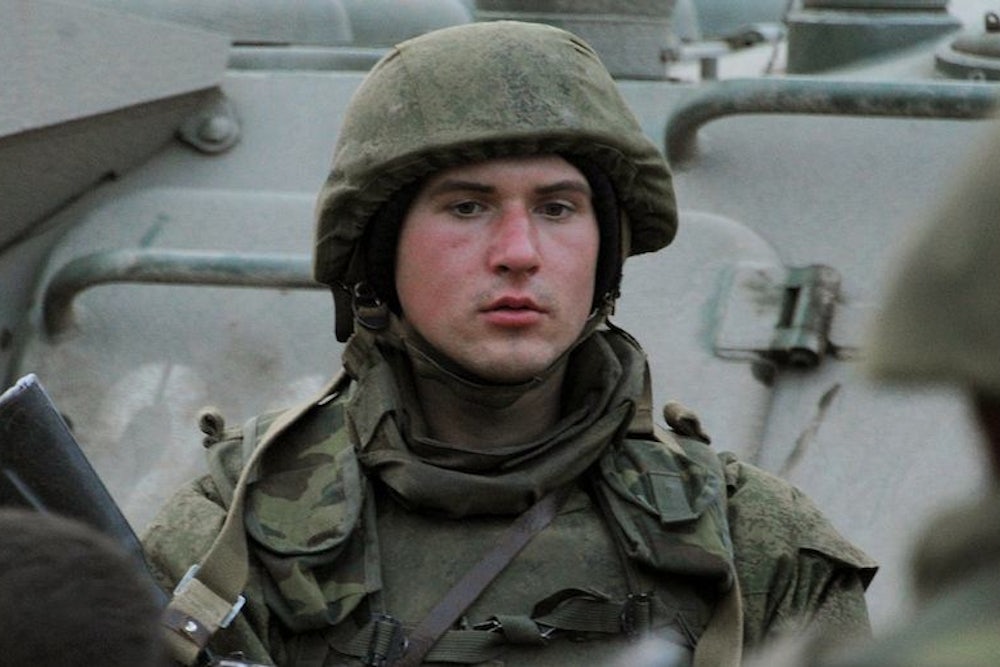To understand why Russia has invaded the Ukrainian region of Crimea now, one should recall why it didn’t do so 20 years ago.
In 1991—the year the USSR collapsed—an attempt by Serbian-majority regions to secede from the newly independent Croatia led to one of the worst bloodsheds in Europe’s recent history. It was definitely on the minds of Russian, Ukrainian and Belarusian leaders when they convened in December 1991 and decided to dissolve the USSR peacefully, respecting the existing administrative borders between former Soviet republics. They prevented a war that would have made conflicts in the Balkans look like pub brawl—just imagine if ex-Yugoslav armies had gotten a hold of world’s biggest arsenal of conventional, chemical, and nuclear weapons.
It was a very difficult decision for Russia, particularly because it left millions of ethnic Russians outside Russia proper, fending for themselves in a new and extremely unsafe world. Ukraine, hammered into its present shape by Lenin, Stalin and Khrushchev (who enlarged it by adding vast swathes of Russia proper and Poland), was a particular cause of concern. But Yeltsin clearly didn’t want to be seen as a nuclear Milosevic—and we should be grateful for that. That’s how Crimea, with its ethnic Russian majority, ended up in Ukraine without being given any real chance for self-determination.
It’s not only a sense of responsibility that prompted Yeltsin to make this decision. The idea of giving independence to various parts of the Soviet empire was indeed popular in Russia at the time. In January 1991, an 800,000-strong rally in Moscow—possibly the biggest in Russian history—demanded the right for Baltic countries to be independent. Russians weren’t averse to Ukrainian independence, either. It was the year of big hopes and immense enthusiasm that contrasts so sharply with extreme cynicism, apathy, and suicidal fatalism that’s engulfing Russia now.
So how did we wind up with Russia invading Ukraine 23 years later?
It took the trauma of World War I and the subsequent humiliation for Germany to elect Hitler in a free election of 1933. Russia had a century of almost uninterrupted traumatic experience starting in 1917, when Bolsheviks took over the country through sheer terror. It voted against the Bolsheviks in the free election of 1917 and put up a far greater resistance to Communism than any other European nation would later on. Around 1.5 million people died fighting against the Bolsheviks in a civil war that continued for four years. Crimea was White Russians’ last stand.
After losing millions in Stalin’s terror and World War II, Russians managed to rebuild the country and eventually get rid of Communist rule in a peaceful revolution of 1991—without any aid from the West. But despite that, the U.S. and Europe made every effort to make Russians feel like losers in the Cold War.
At 19, I took part in that revolution and remember those times vividly. Having emerged from the wrong side of Iron Curtain, we looked dishevelled, pathetic, clueless about the workings of the outer world and extremely, fanatically hopeful that western countries (particularly the U.S.) would safely guide us through this turmoil.
But Russians’ post-Communist experience was pretty similar to that of post-WWI Germany. The 1990s were a time of immense economic hardships exacerbated by pretty awful advice from Western neocons and a horrifying rise in crime and Islamic terrorism—all of which was accompanied by extreme arrogance and constant bashing from Washington and Western Europe. The West supported pretty much every shade of nationalism and identity politics in Russia’s neighbourhood, as long as it was anti-Russian.
Having been essentially ostracized from Europe, a highly traumatized nation found itself in a cultural and political vacuum, like a homeless orphan fending for himself in a slum. No wonder this orphan grew into a rogue teenager. It started with the Chechen war and led to the rise of Putin, who improved the lives of Russians by ignoring rather than following every Western prescription. Putin also forged the Russian nationalist ideology—a potent mix of modern European ultra-nationalism and Soviet chauvinism. He created a repressive system where the overthrow of the current elite is virtually impossible, unless the system itself rebels against him.
What can be done before it gets much worse? First of all, the U.S. and its allies should make a real show of force: They need to back Ukraine with all their military and economic might. Also, they should clamp down on Western assets of Russians officials and oligarchs and expand the Magnitsky list. Force is the only language Putin understands.
But at the same time, they should encourage new Ukrainian leaders to turn their country, where at least half of the people speak Russian in everyday life, into a role model for people in Russia proper. Make it a magnet and safe haven for broad-minded, entrepreneurial Russians. Help it set up innovative start-ups, particularly in the field of mass media: Russia is hungry for objective information. Russians badly need an alternative Russia. Ukraine, which centuries ago emerged as a nation after becoming a safe haven for runaway Russian serfs, is by far the best place to make it happen.
Leonid Ragozin is a freelance journalist based in Moscow.
